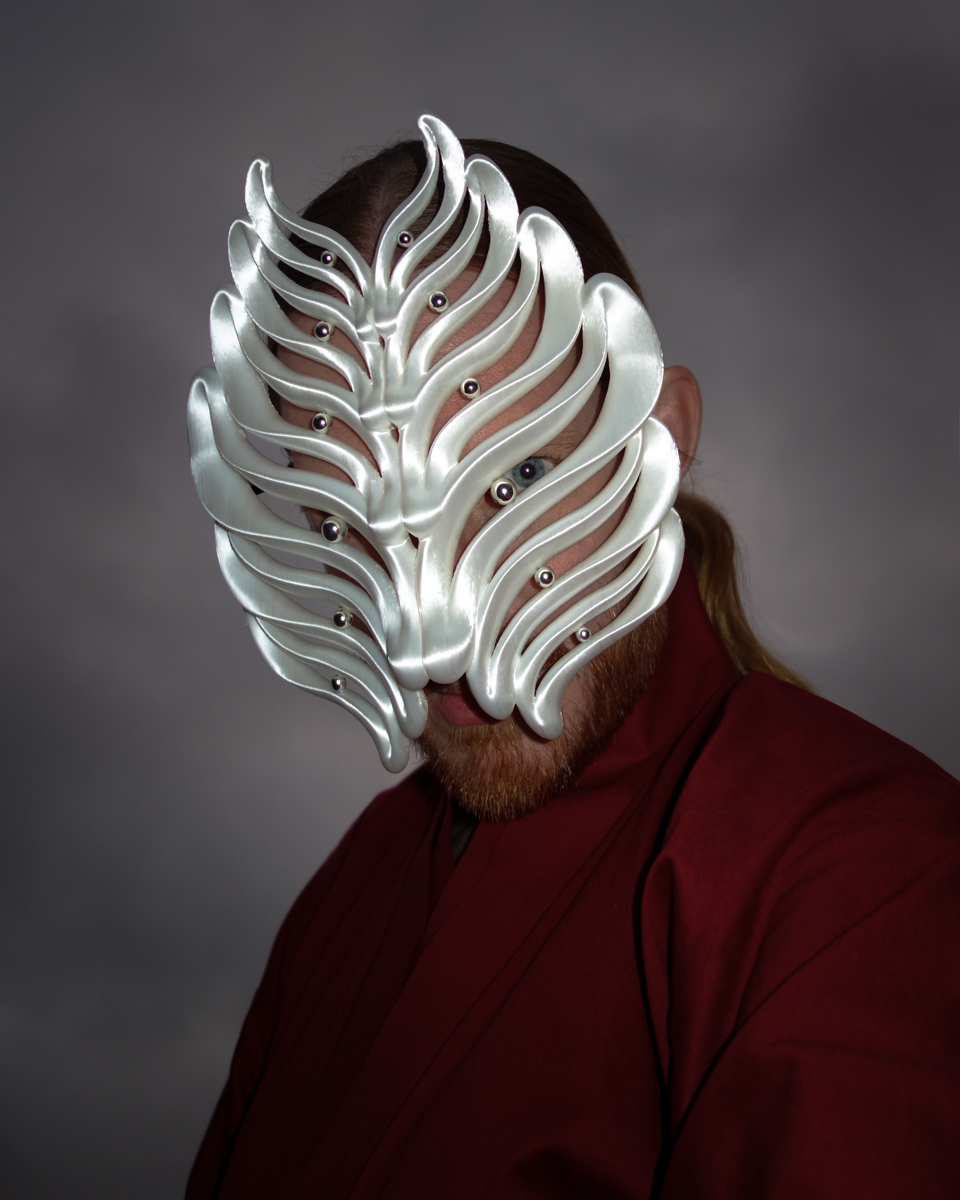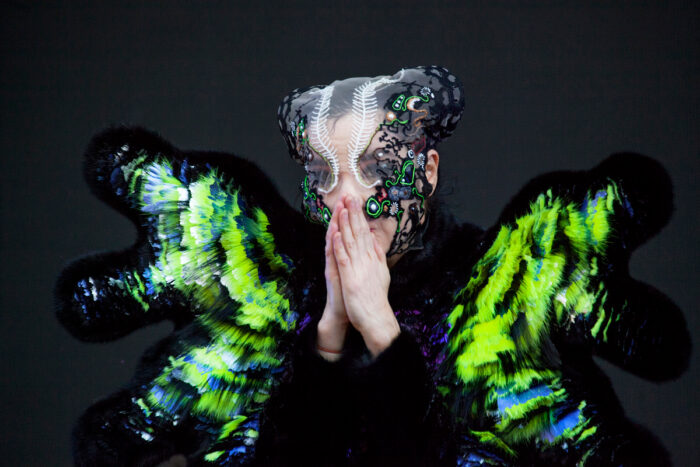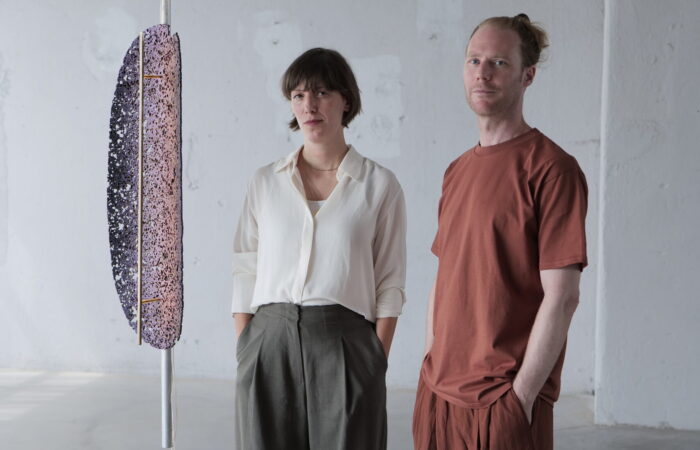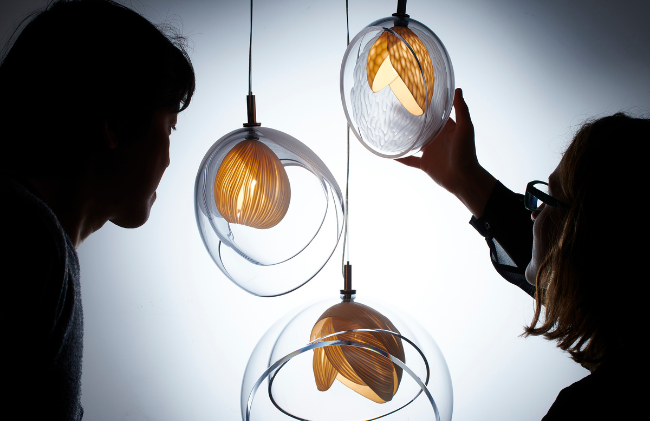Meet The Maker: James Merry
James Merry is a visual artist originally from Gloucestershire, but now based in Iceland where he works as a frequent collaborator with Björk on her visual output.

Please tell us about the materials and techniques that you work with.
My work usually shifts between hand embroidery, metalwork, silversmithing, illustration, 3D sculpting and jewellery. I began as an embroiderer, and that sensibility remains the thread that ties all my other practices together. A lot of my metalwork, for instance, has a distinctly textile quality and I often use wire or silver as though it were thread, shaping it to float around the head in three-dimensional forms. I make each piece by hand in my small studio, situated at the bottom of my garden here in Iceland.

Could you share more about the journey that has led you to be making masks for Björk?
I met Björk in 2009, just as she was coming off the Volta tour and starting to formulate what would later become the Biophilia album. Initially, I joined her as sort of research / personal assistant, but over the years my role evolved to focus more on the visual side of stuff with her – whether it be tour visuals, music videos, making apps or virtual reality projects etc. In 2015, while we were working on the visuals for the Vulnicura album and tour, I started to make some embroidered masks for her to wear on stage. Most of those were made while we were on the road, initially just as a little side project – we were usually so busy working on other stuff during the day, I would make them in the evening in my hotel room. For a long time I saw them as these spontaneous physical flowers that would spring up out of all the other work we were usually doing during the day. So I was often surprised when people would call me her “mask maker” as that was initially a very small (but visible) part of our collaboration. Over time though, the masks became a more integral part of our creative partnership.

Could you talk us through the process of designing and creating one of her masks, perhaps a creation you have been especially proud of?
During the Covid lockdowns, I finally had the time to look back and archive all the masks I had made, and was amazed to discover I’d created over 70… and the process for each one is a bit different ! But typically, there will be some visual references or emotional cues that will emerge from conversations with Björk – or some inspiration from nature that I have become fixated on. And then I will just start experimenting and making prototypes in my studio – often for weeks or months, until I figure out some mood or character that works on the face. A lot will depend on what specifically I am making the mask for: if it is for a video, a live performance, a photoshoot – they all have slightly different parameters for how theatrical or casual they should feel, so that is usually at the forefront too. If we take one recent mask as an example – the “Fascia” mask, I had become very interested in the body’s connective tissue, and had been researching that for a while. Taking that as an initial starting point, I started to draw some contours directly onto a bust of Björk´s head, which I then abstracted into a series of organic flowing lines. Almost all of my previous masks have lifted off the face and floated around the head, as I was always wanting to avoid making a typical “mask” with eye holes that is worn flush to the face. This was my first attempt at trying to make a piece that could easily just be taken on and off like that. I ended up laser-cutting this piece from solid copper, polishing it by hand and then forming it to fit exactly onto Björk´s face. Björk had also been sharing references with me at the time that had this same sort of contour-line feeling – so this mask shows how often it is a strange combination of things that leads to any particular mask: an anatomical reference, some visual clues from Björk, a mixture of hand craft and digital techniques combined, a long process of experimentation with different forms… all of those will merge and a new mask will eventually appear out the other side! Watch the making of this mask here.

How do new ideas emerge for you and what is the process for developing them into finished pieces?
Most of my inspirations, unsurprisingly, come from the natural world — usually something botanical or anatomical, often something internal or microscopic that I want to try and bring to the surface. More recently I have been finding lots of inspiration in archaeological sites and finds, specifically from Iron Age Britain. Typically I will become fascinated by a particular form or structure, and start studying it obsessively for months, until I begin to see it as a character that could live on the face. I prefer to evolve the shapes beyond their origins, creating curves or structures in my own visual language – until I find something that suggests the essence of something, rather than a direct copy of its natural form. I will usually try to clear my mind of references entirely and go into the studio without a sketch, and let my hands do the thinking instead. In my practice I am often switching between different materials and techniques, and I find that approaching it this way lets me react more instinctively to whatever material I am using, until something new emerges.

Where do you hope to take your practice in the future and why?
I’ve recently launched my first pieces of jewellery at Dover Street Market in London, which feels like a very natural and exciting evolution for where I want to go next. Adorning the body has always been central to my work, but now I’m shifting my focus from the face to the hands, ears, necks, and wrists. I´m really proud of those first pieces – especially the fact that I made them in my hometown in Gloucestershire, with the amazing team at Pangolin Editions – a world class bronze foundry just a few steps from where I grew up. I wanted to keep the scale small and focused, prioritising craftsmanship and intention in every piece – and feel very lucky to have done that with them. It was the first time I gave my designs to someone else to make, and I already can’t wait to start making new pieces with them.
Follow @james.t.merry



